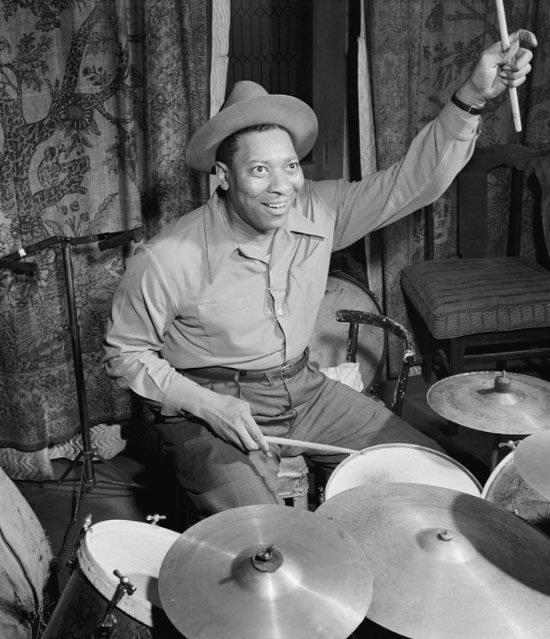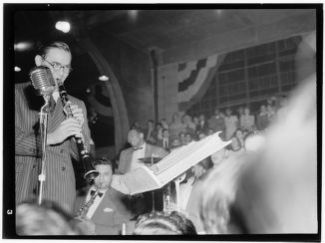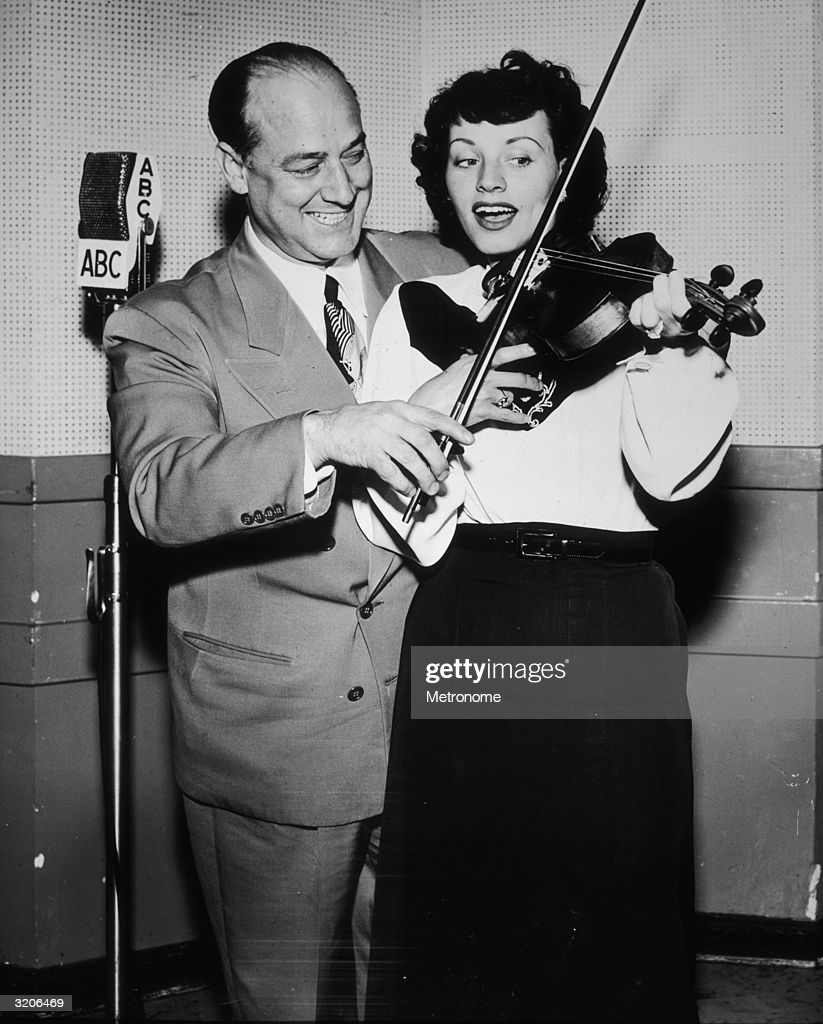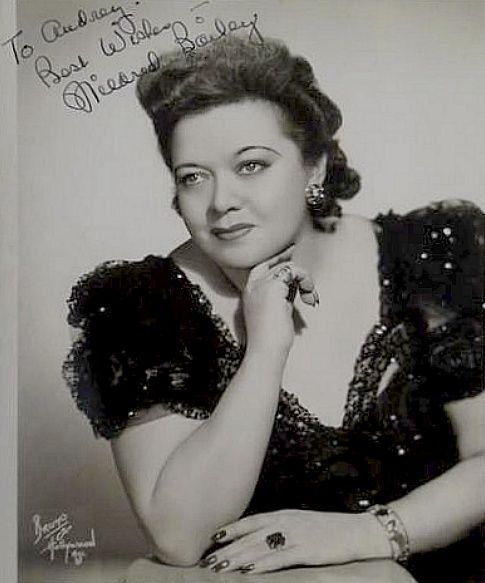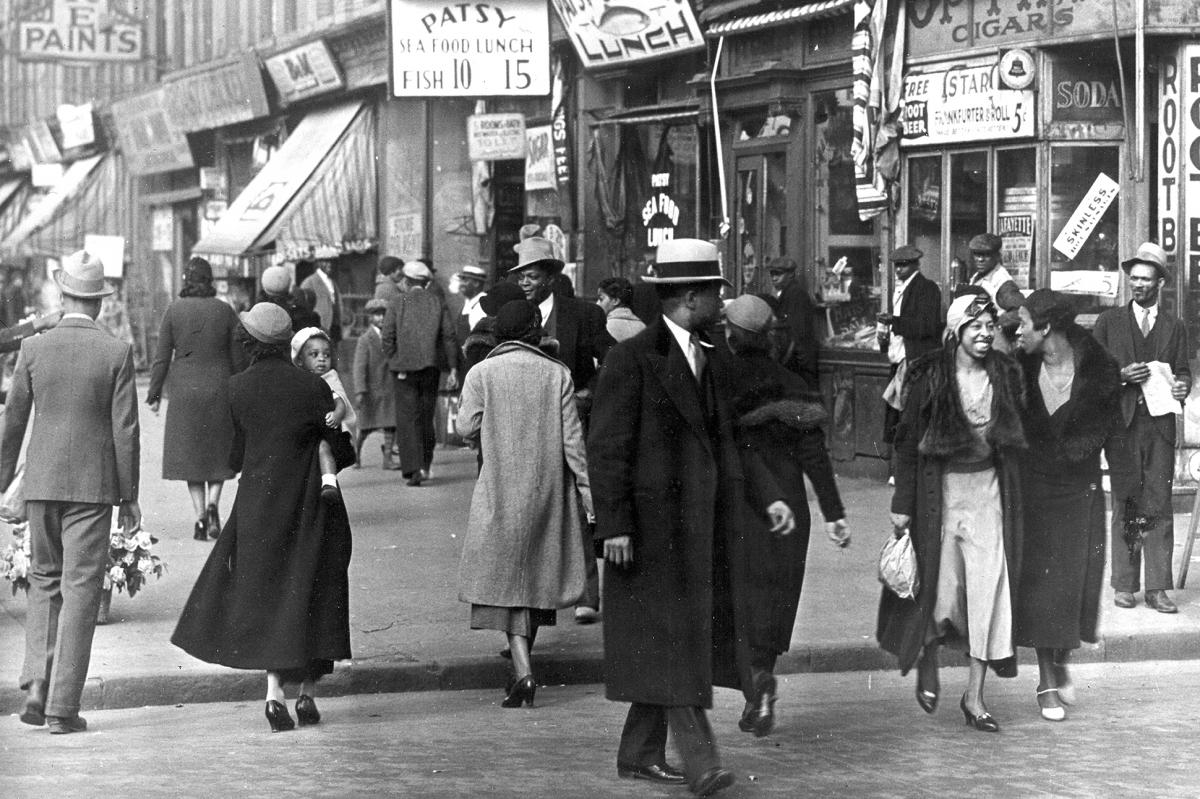Eric Heveron-Smith
fb post 25 June at 05:47
A question was posed on a Facebook group called Swingopedia, and I have decided to finally voice my answer. Hey, it’s quarantine, I don’t have any gigs to lose right now…
“I’ve noticed that music trends in the global swing dance community have changed, since I started in 1995.
I’ve heard a mix of Big Band, RnB, Groove, Soul, Hip Hop, lounge/elevator jazz in early 2000s, Gypsy Swing, Ragtime etc. I’ve even heard Madonna!
What do you believe constitutes swing music and what style of music should we be swing dancing to?
Also should musicians only play recreations of original classics by Basie etc or should they be creating their own music?”
I got a lot of opinions about this. I’m a bass player, trombonist, and singer. I’ve been playing the Lindy Hop scene since 2004, with Solomon Douglas, Jonathan Stout, Michael Gamble, and basically anyone else you can think of. I co-founded Moonshine Rhythm Club. As much as I love playing with all the musicians in this scene, my opinion and my approach to music definitely diverges from a lot of them. And I think it also addresses the lack of a serious Black presence in lindy hop.
Here’s what I think:
The way we approach this music, AND this dance, is not at all in the spirit of those who created it.
Let me unpack that just a little bit. Back in the day, musicians were inventing new music that they dug, and that made people want to move their bodies. So they drew big crowds of people who invented new ways to move their bodies to it. That’s it. Does it feel good? Does it make you want to move your body? Then move your body. How? I dunno, let’s make something up together. Does it sound good? Is it fun? If not, whoops, nobody showed up to your gig.
Today, we have a historical dance taught with a preservationist mindset, and we play historic music with a preservationist mindset, or we almost reverse-engineer what music needs to be played so that we can dance this specific dance to it.
We are starting to see more new, original swing music, and I love that. But it still falls within pretty strict guidelines. We are also starting to see more swing audiences actually caring about the music itself, not just as a utilitarian function to dance to; I would definitely credit Michael and Jonathan and the Lindy Focus community for encouraging that, and I think the transcription projects have been a big part of that. It’s been really cool playing at Lindy Focus the past few years and seeing crowds of people standing by the stage just DIGGING the music.
But when you think about what was happening in the 30s and 40s with music and dance, it was a popular movement, and an organic thing. You wanna know what happened to Black musicians and audiences? They didn’t stop playing music, and they didn’t stop dancing. They created new genres, and they created new ways to dance to them. Every single decade up to the present. How can you expect to attract Black musicians and dancers to a scene that is frozen in time?
So ok, what am I proposing instead? I don’t have all the answers, for sure. And yes, I am still a musician that loves playing vintage jazz, and loves playing for dancers. But I look at musicians like Kansas Smitty’s, Bria Skonberg, Jazz at Lincoln Center Orchestra, Gunhild Carling, and so many others that play amazing, badass, swinging, move-your-body music, and who aren’t even CLOSE to cutting-edge far-out modern jazz, and I hear crickets from the lindy hop community.
Here is my point. There is SO much music out there that swings. Modern stuff. Stuff that feels really good, deep in your body, and makes you want to move and groove. And because it doesn’t fit the specific historical constraints of the dance that this community commodifies and REPLICATES, lindy hoppers want nothing to do with it.
Like, how can you ask the question “what constitutes swing music” or “what style of music SHOULD we be dancing to,” and then turn around and act bewildered that you don’t have more BIPOC in the scene??
I envision a world where the historical preservation of swing music and dance can meet the modern world, where there are all kinds of dances being done to all kinds of killer music. You don’t have to drop the preservation stuff, you SHOULDN’T stop studying and presenting and talking about the history of jazz and swing and lindy hop. But what you have done is put walls around this whole situation, and it keeps you in, and it keeps a whole lot of other people out. It’s religion, in the restrictive sense of the word. And if you ever manage to notice how many badass vintage jazz musicians don’t bother with the swing dance scene anymore, it’s because they don’t fit. They got too big for the walls.
Personally, I would love to be able to continue playing swing music for lindy hoppers. But I can’t tell you how many frustrating gigs I’ve had where either the audience barely noticed there were real musicians on stage, or I was playing with really poor musicians, but nobody really cared because they fit the constraints of the dance. I think my favorite gigs are where some people are dancing (whether it is a dance or not, because they feel it in their bodies), and some people are listening (because they actually hear and enjoy the music), and I can stretch out with my fellow musicians beyond the artificial, misinformed, dance-centric constraints of “around 3 minutes song length, not too fast, not too slow.”
Oh yeah, I thought I was wrapping up, but that’s another thing I gotta address. Not every song has to be danceable for every person. That’s another aspect of the utilitarianism of music in the dance community. You think that because all we have are 3-minute songs from the swing era that that was what musicians did live. I can’t possibly believe that’s true. Not gonna go too deep down that rabbit hole, but here’s something to think about: as soon as the long-playing record was invented, Duke Ellington released a 12-minute version of Mood Indigo, and it is glorious. My favorite version of that song ever. SO swinging, so beautiful, makes me want to move, makes me want to play.
Jazz is a living art form. It’s an improvisational art form. The very best times I’ve had playing jazz with people, we’ve found our way to the special spark, the moments that make people look up and shout, the moments that inspire dance. If I’m hired to perform a utilitarian function for your specific dance style, and I’m fired when I go outside the specific constraints, you’re not gonna get my best. You’re not gonna get the magic, the spark. You are missing out. (I have a couple dancer friends in Rochester who figured this out years ago, and started going to the international jazz fest there and checking out all sorts of amazing music. They GET it.)
Music and dance have been co-created since humans have existed. In my opinion, the lindy hop community is creating neither one right now. I don’t think it has to stay that way; but you’ve gotta tear down the walls, if you want it to change.
(Disclaimers. 1. Even though I’m speaking somewhat harshly about the scene, I still love parts of it, and I love a lot of the people in it, and when I play at Lindy Focus and walk around those hallways, I’m proud and glad to be part of it. 2. I’m talking about some historical stuff in here, but I am far from a swing historian. Michael Gamble, Jonathan Stout, Jon Tigert, and a bunch of other musicians and dancers probably know quite a bit more than me about the specific history of the music and dance. The depth of my musicianship is what makes me feel like I have something to offer with this commentary.)
I have problems with the American-centredness of this post. He is generalising from what he sees in the US (at huge events) to the entire world. And it just doesn’t hold up. I’d argue that the ‘mega-event’ is a very different animal (and product) to smaller events that focus on a regional audience, or even hyper-local audience. The usual issues apply to a huge event: you need to entertain trillions of people, you have to appeal to the widest audience (rather than niche audiences), you have a lot of money at risk, you need to do quality control. You and and should (perhaps) use this big budget opportunity to do more big band gigs. The events he’s talking about are largely in the US, and these are unlike things you see in other countries (with the exception of Camp Swing It, which is MASSIVE). So you end up with a relatively homogenous, palatable menu of music and dance held in a boring big hotel, isolated from the local host community.
Because he’s generalising from big US events, he ignores all the smaller, more interesting events. There’s no Upside Down here. No Rhythm Korea. No Jazz BANG. He also conveniently ignores the work being done by Black event producers. Teena Morales, anyone? She’s been running the biggest events in the US for years. And she runs the Houston Jazz Dance Festival, which has all-Black musicians and teachers, and is firmly positioned within the modern Black community’s culture.
He says:
“But when you think about what was happening in the 30s and 40s with music and dance, it was a popular movement, and an organic thing. You wanna know what happened to Black musicians and audiences? They didn’t stop playing music, and they didn’t stop dancing. They created new genres, and they created new ways to dance to them. Every single decade up to the present. How can you expect to attract Black musicians and dancers to a scene that is frozen in time?”
Well, they’re at Teena Morales’ event, doing dances that actually relate to them, with people who make them feel welcome. But let me address this issue: how to attract Black dancers to lindy hop. I’m guessing he means the US? This issue is a lot like the issue of attracting people of colour to other institutions. It won’t work if you don’t deconstruct or analyse whiteness itself:
As result of the invisibility of whiteness, diversity initiatives are often about including diverse bodies into the mainstream without critically examining what that mainstream is” (source: Diversity Means Disruption ; I speak more about this here: A Lot of White People Will Be Uncomfortable).
And if we’re going to deconstruct whiteness, we also need to deconstruct patriarchy, because white supremacy is built on the dominance of heterosexual masculinity.
If I follow that thinking, to truly change the nature of jazz and music in the lindy hop world, do we need to kill off the mega-event?
Here’s the thing. Covid19 has already done this. This is another thing that I see missing from so much of the online talk about lindy hop culture: this moment of change/crisis is the result of a global pandemic. Push has come to shove. BUT, white people have the time and energy to dig into ‘racism’ because they are in iso, or because their usual lives have been disrupted. Black people and marginalised people are busy trying not to die, whether they’re killed by disease, an dangerous ‘healthcare’ system, or the police.
So why does this white male musician assume that things will go on as they did before? They’re not going to. The world has changed irrevocably. The mega-event is not coming back any time in the next few years. That means the the existing market/audience for the mega-event will have disappeared (we know the lindy hop ‘generation’ is only about 5 years long). We also know that all the necessary infrastructure for a mega-event will also have disappeared: international airlines have folded; the arts are in disarray, from sound engineers to restaurants; international guests will not be visiting the US with its unchecked covid. It would also be horrifically selfish for dancers to attend a mega-event… lindy hop = superspreader.
So I think the question has to be,
What will jazz music and jazz dance look like in a covid19 world?
At first I was all ‘no one wants jazz dance during a plague’ and then I remembered that people really want music and dance during hard times. Who gets to dance will be the issue.
My government has taken advantage of the virus to introduce frightening laws, and expand awful powers. The same company that runs our offshore-detention camps for refugees is in charge of the quarantine hotels. Poor, refugee, and migrant people have been detained in housing commission towers for fear of covid spread. The federal police have expanded search and detain powers. … and so on.
The people who are suffering most from this are the Black members of our community.
I haven’t quite gotten there in the thinking, but I think that it’s obscene to consider running a mega-event in this climate. I mean, I have huge, massive ethical problems with fundraising for white people to transcribe Black recordings so white people can play them for white audiences in THIS moment. It’s a great promotional gig, but how does it fight white supremacy?
So if we can’t do mega-events, what do we do?
The same thing marginalised events and dance communities have already been doing: smaller scale events that cater to the local community’s needs and interests. And by local community, I mean the musicians, sound engineers, DJs, dancers, teachers, performers of a particular city. There’s no budget to fly in the same old crew of white men. So we get local. And that, as with governments*, means we have a more diverse body.
We subsidise local dancers on lower incomes with volunteer spots. We see a more sustainable labour model generally. And we see greater diversity in event types and event staff and attendance. The thing about smaller events, is that they often don’t enforce those rules about what bands should play. For all sorts of reasons. But you’ll get the odd funk number, you’ll get 10 minute songs, and you’ll get a range of tempos. Because the organisers don’t have the ‘knowledge’ to control the music like that. And they don’t particularly prioritise that issue – they’re trying to find the light switch or get the key for the late night party.
I think that this ‘definition’ of ‘good music’ is a matter of power and privilege, not objective value or ‘truth’. As the OP says, insisting on ‘good songs for dancing’ gives us a boring menu, and promotes a conservative palate. This in turn gives us boring dancing. None of those sparks of real creativity and emotion.
I think that DJing plays a big part in this. The lack of diversity in the highest profile DJing ranks is a direct result of some serious gate keeping: DJs are selected for their social skills (do they network like a white man?), their availability (do they have the money and time to drop everything for a weekend gig? Or do they have kids and family to care for?), and then, finally, their music taste (how do they talk about songs – loudly in a crowd, or with a quietly brilliant set at 11pm?). This type of musician hierarchy and power structure marginalises anyone who’s not a straight white guy.
If we want to see more diversity in the songs being played by musicians, we need more diversity in the cohort of musicians.
Which means WHITE MEN NEED TO STOP RAPING AND HARASSING EVERYONE ELSE.
And
WHITE MEN NEED TO STOP _EACH OTHER_ DOING THIS SHIT.
* Local governments have more women, poc, and other marginalised groups represented. As we move up tiers of government (state, federal, commonwealth, etc), we see diversity disappear and white patriarchy at work.
….RE sexual assault in the jazz music scene:
That’s my next job. I was starting work on it before covid, by deliberately setting up gigs and sessions that promote women musicians (ie sessions that are safe workplaces). But it’s been derailed. I figure we can use the methods we’ve developed in the dance world to tackle the music world.
One of the things we’ve found in Sydney, is that if we address sexual harassment and assault, we get a safer, more diverse scene generally. More people of colour, more queer folk, more trans folk, more kids.
This why this OP musician needs to address his own power as a white man in America. He is one of the obstacles we need to deconstruct.
Michael Gamble
fb comment on above post
25 June at 10:30
Hey friend, we have talked about this a bunch, and I know we have a lot of common ground, so i feel comfy talking about this “publicly” with you. I also wanna say I appreciate that going out on a limb can be stressful, and I respect you getting into it regardless.
That being said, I think you’re coming at this from a strange angle, one that on the surface looks extremely relatable (I see a “successful” post/video/blog/etc on this topic about once a month for, I dunno, the past 15 years or so) but to me totally falls apart when you zoom in. My issue is that the thing you’re critiquing isn’t some firm opinion that anyone holds, it’s just the emergent properties of a bunch of different people’s subjective taste. And I’m pretty sure you’re ok with it on the micro level, you just don’t like the overall effect, yeah?
Like, I play music in a style I like. To you it’s narrow, but for me it’s actually a wild experiment in combining elements of different swing era rhythm sections with elements of early new orleans & chicago looser collective improv, moving familiar riffs to new contexts, and yes, paying homage to inspiring classic (but never heard live by current audiences) recordings. There’s a ton of room to play there for those of us that are deeply in love with the performers, arrangers, and composers of that era, and importantly, the current dancers, instructors, and organizers are also deeply educated fans of a wide range of old styles, and enjoy playing in that space – that’s why they hire these bands. (They’ve been geeking out on these rare recordings that they and their friends uncovered over the course of years of musical archeology, and look!-> someone’s playing that live?? Hell yeah I’m gonna hire them, that’s a dream come true!!) And unless I read you wrong, you probably think that’s cool, you just wish that wasn’t ALL there is, or something?
Here’s where I point out that there are a million other places to play music, to dance, and to explore like, every iteration of every art under the sun. The WCS scene has much more modern taste. The Blues scene, and especially the Fusion scene know how to break the mold and push boundaries. (also, there was a generation of Bebop dancers at the Savoy, and there is a push within the modern lindy movement to explore that.. which I think is great. Just FYI!) Do you know about those? The swing scene isn’t this philosophy-driven “preservation movement” in the way you’re making it out to be; it’s a loose collective of folks that happen to have a lot of taste in common. That’s…it. Trying to say their taste should be different is just… weird to me.
Like, there’s nothing stopping anyone from experimenting with other flavors like those scenes do, or like another theoretical new scene could do. There are plenty of folks that don’t dig Ella Fitzgerald & Chick Webb, Billie Holiday & Teddy Wilson, Jimmy Rushing & Count Basie. I wouldn’t wanna live in a world where what we’re doing is the only thing.. and it’s not!
I think that’s my other issue with this type of takedown —> do you realize how small the modern swing scene is? Like, compared to virtually any other hobby or “art scene”? It’s a niche within a niche within a niche. We are people who love what, in our evaluation, is actually a very broad range of dance and music forms that one could spend many lifetimes studying and never master. We’ve carved out a little space to do our thing. And still people feel the need to tell us to stop. All. The. Time.
Last thing: I see “this” being the thing that’s blamed for lack of blackness in our scene very casually, on a regular basis. Y’all, the causes of that are soooo much worse than this one singular artistic impetus. Our scene alienates black folks in basically every way that appears on the racism bingo card. Don’t make vintage music the scapegoat for this. Our scene has historically welcomed and elevated racist individuals and ideas for as long as I can remember, to our shame. Also, though it is somewhat rarer (remember: niche within a niche within a niche), there are a lot of great black musicians that play great swing and early jazz. Mostly we honestly just can’t afford them. (yet) And yes, also the overall whiteness of our scene makes it a less attractive place to seek work, which makes sense. THAT is something we can change. I can’t even remotely pretend to speak for any black person in this, but I think at the very least you are making a ton of assumptions about what’s causing what, and there’s a lot more going on.
(and here’s my social media caveat – my life is nuts right now and I totally don’t have time for an extended FB debate, AKA what the hell am I doing?? Regardless, I do love you, Eric Heveron-Smith!)
I’d add this as an example of Michael’s missing some of the political point:
“My issue is that the thing you’re critiquing isn’t some firm opinion that anyone holds, it’s just the emergent properties of a bunch of different people’s subjective taste.”
There’s a chunk of literature about how ‘individual taste’ isn’t about individual subjective choice, but about cultural forces. So while these aesthetics might seem ‘subjective choices’ from the inside, they’re clearly part of broader patterns and structures of patriarchy and white hegemony. As soon as we see patterns, we can look for the forces that are invisible to the dominant group because they are so ‘normalised’.
ie we have normalised the idea that a bunch of white people playing Black music at an event promoted as ‘preserving the past’ is a good thing. We haven’t engaged with the idea that white people are gaining cultural power from this work, that modern Black musicians are marginalised, and that only seeing white people on stage supports the myth that Black people don’t like jazz or do it well.
This is another difficult bit for me:
“There’s a ton of room to play there for those of us that are deeply in love with the performers, arrangers, and composers of that era, and importantly, the current dancers, instructors, and organizers are also deeply educated fans of a wide range of old styles, and enjoy playing in that space – that’s why they hire these bands. (They’ve been geeking out on these rare recordings that they and their friends uncovered over the course of years of musical archeology, and look! someone’s playing that live?? Hell yeah I’m gonna hire them, that’s a dream come true!!)”
My feminist brain is saying “Who is ‘those of us’? And ‘their friends?’?”
Who is running these large events?
Who is managing the music?
It’s mostly white people, and mostly white men.
My follow up question would be, “If white men are doing the music stuff, what jobs do women do on these events?” and “What jobs to people of colour do on these events?” Are they handling the low-profile stuff like catering or volunteer management or budgets? Events like Focus spend a lot of time convincing people that music is the most important part of an event. The jobs men do. When punters might say, “Actually, the person who met me at registration and made me feel welcome was the most important person I met this weekend.”
The dominant discourse of modern lindy hop prioritises and values the work that white men do most highly.
Here’s another issue:
“The swing scene isn’t this philosophy-driven “preservation movement” in the way you’re making it out to be; it’s a loose collective of folks that happen to have a lot of taste in common. That’s…it. Trying to say their taste should be different is just… weird to me.”
This is a misleading premise.
This isn’t how ideology works. If it’s a fascist state, it might. But hegemony in the modern capitalist patriarchy works in a different way. We don’t have a scene spokesman standing at a mic declaiming, “We will only enjoy bands from 1935-1945. We will only dance to bands from the US.”
…wait. :D
But hegemony is more subtle. We get this message that ‘preservation is prime’ from a whole heap of sources and texts:
- The only bands that get hired at mega-events are preservationist bands led and staffed by white men. Each of those independent messages tells me that big organisers don’t value the work of women or people of colour. It also suggests, implicitly, that the only _valuable_ or ‘good’ musicians are white men.
- The only DJs who play those mega-events are white. And often white men (those the latter is changing, I’d argue that most of those white women DJs (myself included) are people who engage with dance in a particular way: assertive, relatively ambitiously, etc -> characteristics usually ascribed to hetero white men).
…and so on.
I’m interested in how this works in places like Seoul. There we see white bands flown into the country for big gigs. And they’re the same bands we see at American mega-events. But we also see local gendered and ethnicised relationships of power at work. Interestingly, Sage Minn’s band, one of the very few in Seoul, has women members. I wonder if it’s because they’re playing western music, Korean mores and values don’t apply in the same way? I actually saw a fab conference paper about pop culture in Seoul a few years ago that discusses this.
“Like, there’s nothing stopping anyone from experimenting with other flavors like those scenes do, or like another theoretical new scene could do. There are plenty of folks that don’t dig Ella Fitzgerald; Chick Webb, Billie Holiday; Teddy Wilson, Jimmy Rushing; Count Basie. I wouldn’t wanna live in a world where what we’re doing is the only thing.. and it’s not!”
…so you can do all that other stuff, just not here?
“I think that’s my other issue with this type of takedown —”
This is where this post gets a bit defensive. The original post was actually really gentle (I thought). But you know that saying, “When you’re accustomed to privilege, equality feels like oppression.”
If you’re used to adulation, a little light supposition feels like a take down.
“Last thing: I see “this” being the thing that’s blamed for lack of blackness in our scene very casually, on a regular basis. Y’all, the causes of that are soooo much worse than this one singular artistic impetus.”
This is a deeply problematic comment. I’ve seen this quite a lot in white discussions about racism (I actually did a Masters on it). If we only define racism as white cops killing Black kids, or KKK lynching Black men, then anything ‘less’ can be positioned as ‘not-racism’.
But we know that racist discourse is far more complex. All those white DJs and white bands and white MCs? That’s racism.
Here’s an example:
“there are a lot of great black musicians that play great swing and early jazz. Mostly we honestly just can’t afford them.”
This is racism.
In this sentence he is literally saying that he/we** do not value Black musicians enough to pay them what they’re worth.
It’s racism because of what is not said, and because of the implicit valuing of ‘historic’ Black work, and devaluing of contemporary Black work. We’ll only raise a zillion dollars to fund the transcription of work by dead Black men; we won’t shell out some of that money to pay living Black men and women a living wage.
More importantly, this statement presented with no facts or evidence, will become a ‘truth’ repeated all over the scene. It will become what we describe in cultural studies as a ‘myth’: a valuative statement that is repeated so often it becomes a ‘fact’ with huge, powerful status.
The effect of this type of cultural myth is that other events and organisers won’t book Black bands or artists because ‘they’re too expensive’. And the myth will grow.
But why. Why is a Black musician more expensive? Does he mean that he’ll only hire a brilliant Black musician, but won’t hire a less awesome Black musician, and is quite ok hiring mediocre white men musicians?
I can’t continue down this reasoning: mediocre white men. Oh to have your confidence and power.
**The way he elides ‘we’ and ‘I’ is telling – he positions himself with an important ‘many’/majority, rather than taking responsibility for his own choices. This establishes his position as part of a powerful ‘many’.
“and here’s my social media caveat – my life is nuts right now and I totally don’t have time for an extended FB debate, AKA what the hell am I doing??”
While I have sympathy for him, I’d like to remind the white world that Black Americans have been fighting like demons while their society rapes and murders them with official sanction. Women work on sexual harassment and assault issues while they are being harassed every day.
This is why we call it disruption: it disrupts the status quo. And if you’re a white man, it’s often the first time you’ve had to do this work while also managing your daily dramas.
As a final note, I’m gonna quote Audre Lorde:
For the master’s tools will never dismantle the master’s house. They may allow us temporarily to beat him at his own game, but they will never enable us to bring about genuine change (source: Audre Lorde, Sister Outsider
In this context, I mean that accepting the premise of the original post is misleading. Following the instructions of a powerful white man will not help us deconstruct racism. We need to do something completely different.
I’m going to direct you to this post.
Diversity Means Disruption.
Why hire First Nations people into your mostly white structure and expect/want/demand everything to remain basically the same?
… diversity and inclusion policies and initiatives … are often shallow exercises as they are seldom created to challenge and disrupt whiteness within and outside the sector. We cannot change institutional racism without first changing institutions and without disruption, nothing will change.
Covid19 provides an opportunity for this disruption. Or does it? In the US and here in Australia, people of colour are disproportionately affected by the virus and its effects. They’re too busy fighting racism to think about jazz. Here is a really clever twitter thread, where the writer Abu Owaisi connects up the Victorian government’s locking 9 housing commission towers, the SES removing donated goods, white journalists’ influential commentary, and the devaluing of work by migrant community groups.
So, allies, time to dismantle the master’s house. Let’s do something completely new.


